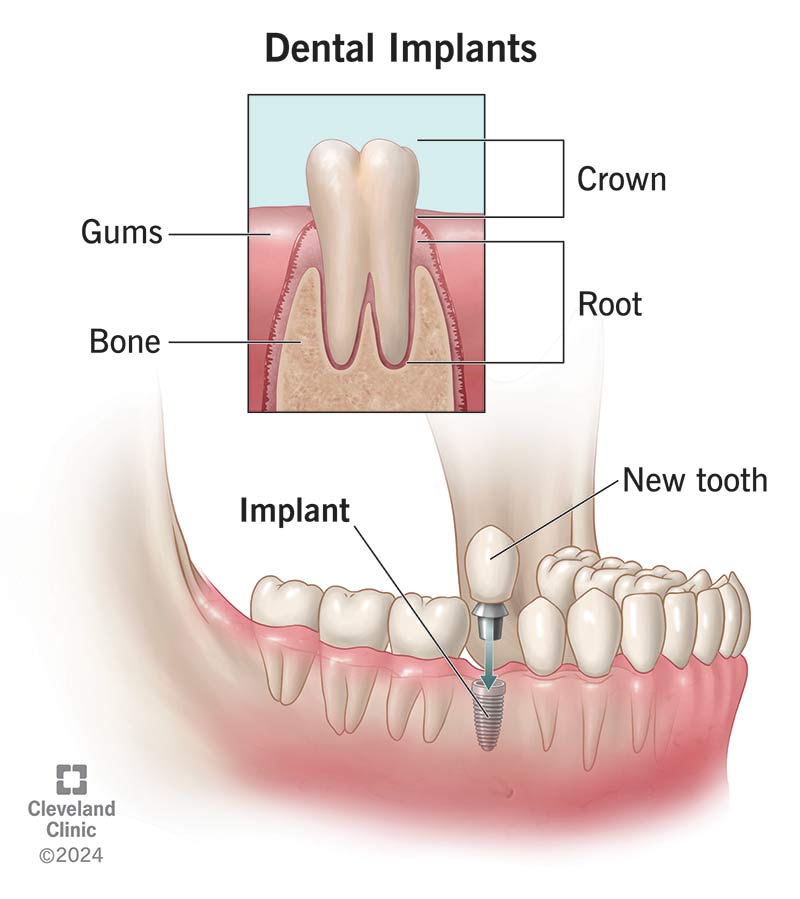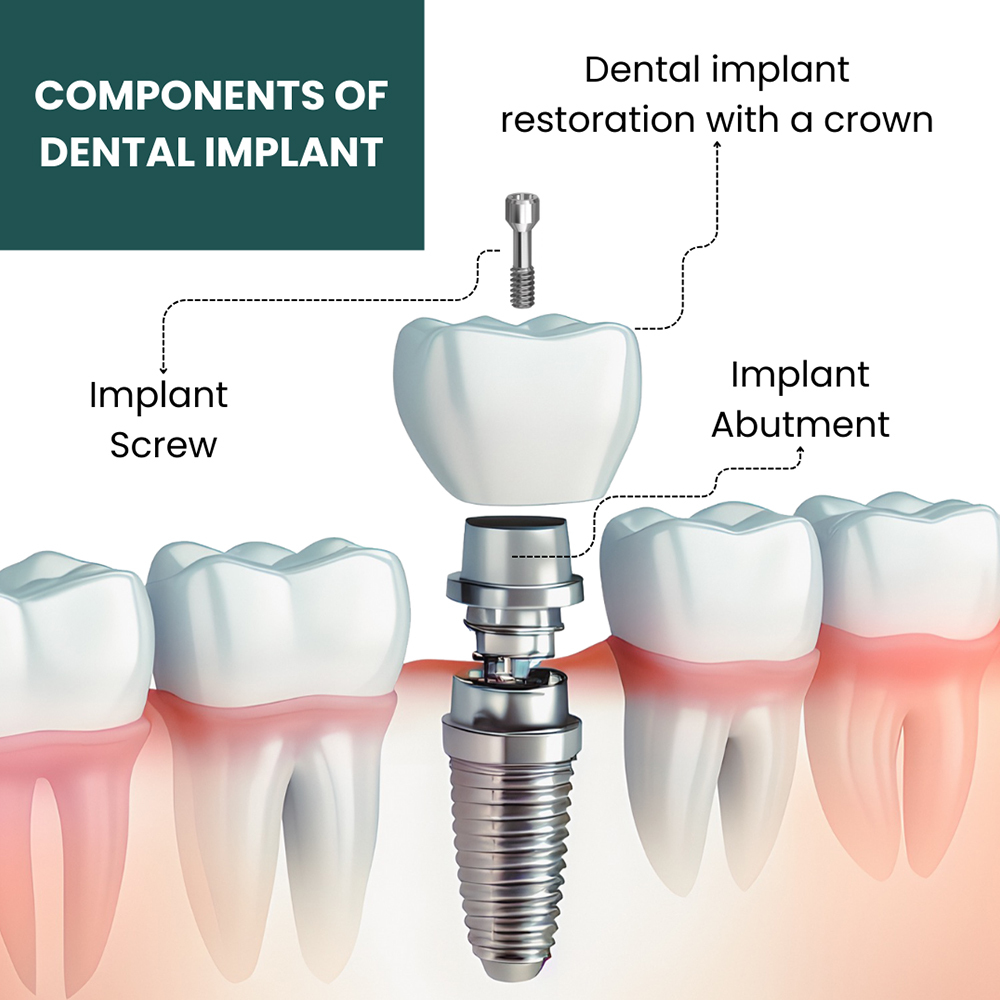All About Dental Implants
Not known Details About Dental Implants
Table of ContentsThings about Dental ImplantsAn Unbiased View of Dental ImplantsIndicators on Dental Implants You Need To KnowSome Known Details About Dental Implants
are medical gadgets operatively dental implanted into the jaw to bring back an individual's capacity to eat or their appearance. They give support for man-made (phony) teeth, such as crowns, bridges, or dentures. When a tooth is shed as a result of injury or disease, a person can experience difficulties such as fast bone loss, malfunctioning speech, or changes to chewing patterns that result in pain.
Framework of The Dental Implant System selecting dental implants, speak to your oral company about the possible advantages and dangers, and whether you are a candidate for the treatment. Things to think about: Your total health and wellness is an important aspect in identifying whether you are a good candidate for dental implants, how long it will certainly require to recover, and how much time the implant might remain in area.
Cigarette smoking may impact the recovery process and decrease the long-lasting success of the dental implant. The healing process for the dental implant body may take numerous months or longer, during which time you normally have a short-term abutment in location of the tooth. the oral implant treatment: Thoroughly adhere to the oral health instructions given to you by your oral provider.
10 Simple Techniques For Dental Implants
Implant failure can cause the demand for an additional operation to repair or replace the dental implant system. Restores the ability to chew Restores aesthetic appearance Aids maintain the jawbone from diminishing because of bone loss Maintains the health of the surrounding bone and gums Helps maintain adjacent (close-by) teeth steady Improves quality of life Damages to bordering all-natural teeth throughout implant placement Injury to the surrounding cells during surgical procedure, such as sinus perforation Injury during surgical treatment (for example, fracture of surrounding jawbone) Insufficient function, such as feeling like the teeth do not attack with each other usually An experience that the tooth hangs or twisting in position resulting from an abutment screw loosening Implant body failing (looseness of the implant body) due to systemic infection, which might be more likely in patients with unchecked diabetes mellitus as a result of regional infection in bone and gums sustaining the dental implant body as a result of delayed healing, which might be most likely in clients that smoke Problem cleaning the gums around the dental implant, resulting in bad oral health Neglected periodontal condition Post-surgical tingling due to nerve impingement or damages Constantly notify wellness care suppliers and imaging service technicians that you have dental implants prior to any type of magnetic vibration imaging (MRI) or x-ray procedures.
FDA is not familiar with any type of adverse events reported for MRI or x-ray treatments with oral implants. Dental implants systems are typically made from products that comply with worldwide agreement standards of the International Organization for Standardization (ISO) or ASTM International. These criteria have details of what makes a safe material.
Oral dental implant systems are examined according to international consensus requirements. Biocompatibility testing, view it now to show that bodily contact with the device does not cause complications like irritation or allergic reaction, is part of the evaluation that helps ensure the products in the oral implant system are risk-free and do not trigger unfavorable effects when implanted in people.

The Greatest Guide To Dental Implants
Some individuals are not qualified for oral implant surgical procedure. It is for dental doctors to operate on individuals with: intense illnessuncontrollable metabolic diseasebone or soft cells disease or infectionIf these problems are solved, an individual can have the surgical procedure. Dental Implants. In, oral cosmetic surgeons avoid running on individuals with: If people with any of the above go through oral implant surgical treatment, there is a higher risk of the implant stopping working
Some individuals have a jawbone problem that protects against sufficient bone for an implant from creating. In such instances, a specialist may need to perform a ridge modification. This involves raising the gum tissue to subject the area of flawed bone. The specialist will after that use a bone or bone replacement to repair and accumulate the area.
Dental dental implant surgical treatment is a customized process. It's not the very same for everybody. The adhering to offers Find Out More a general review of what you can expect your dental professional, dental doctor, periodontist or prosthodontist to do: Put the dental implant surgically. Give you time to heal. Connect the post and final crown, bridge or denture.
Next see off, your surgeon will very carefully place the oral implant into your jaw. Your cosmetic surgeon will certainly reposition your gum tissues and close the cut with stitches (Dental Implants). If your dental implant is near the front of your mouth, your dentist will certainly make a temporary tooth for you to use up until you heal. That way, you won't have a void in your smile while you recover.
Dental Implants for Beginners
Throughout the recovery phase, your jawbone must fuse to the oral implant. This process can take anywhere from three to nine months.
As soon as your implant heals, your dentist can connect the joint (little connector blog post) and your last reconstruction (crown, bridge or denture). This generally takes regarding one hour to complete and might call for a 2nd minor surgical procedure. You should not feel any pain throughout your dental implant treatment since your supplier will certainly use drug to numb your periodontals.